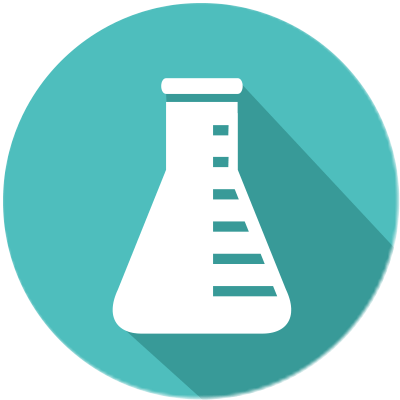
Cambridge Healthtech Institute’s 3rd Annual
Microbial Production
January 17-18, 2019
Microbial-based expression systems offer significant advantages over other hosts by offering faster development times, greater yields, and lower production costs, particularly in E. coli. However, limitations around expression, glycosylation and central
metabolic pathways poses significant challenges.
Cambridge Healthtech Institute’s 3rd Annual Microbial Production conference examines the latest developments in microbial-based production – from strain development to metabolic engineering, assembly to scale-up, process development to analytics.
Particular focus is with particular focus on the role of E. coli for biotherapeutics, novel products and other industrial applications.
Final Agenda
Day 1 | Day 2 | Download Brochure
THURSDAY, JANUARY 17
7:45 am Registration and Morning Coffee (Sapphire West Foyer)
8:10 Organizer’s Welcome Remarks
Daniel Barry, Senior Conference Director, Cambridge Healthtech Institute
8:15 Chairperson’s Opening Remarks
Danielle Tullman-Ercek, PhD, Associate Professor, Department of Chemical and Biological Engineering, Northwestern University
KEYNOTE PRESENTATION
 8:20 Bacterial Cell-Based and Cell-Free Systems for Biosynthesis of Complex Glycans and Glycoconjugates
8:20 Bacterial Cell-Based and Cell-Free Systems for Biosynthesis of Complex Glycans and Glycoconjugates
Matthew P. DeLisa, PhD, William L. Lewis Professor, Chemical & Biomolecular Engineering, Cornell University
Our group has harnessed natural biological pathways and engineered synthetic designer pathways in bacteria for making complex glycans and conjugating these to lipids and proteins. In this talk, I will discuss how these efforts have resulted in the transformation
of bacteria and their cell-free extracts into robust platforms for scalable, bottom-up production of complex glycoconjugates by design.
9:00 Shaping Escherichia coli for Recombinant Protein Production
 Jan-Willem de Gier, PhD, Associate Professor, Department of Biochemistry and Biophysics, Stockholm University
Jan-Willem de Gier, PhD, Associate Professor, Department of Biochemistry and Biophysics, Stockholm University
My laboratory has been using both evolutionary and engineering approaches to shape E. coli for the production of recombinant proteins. In my talk, I will focus on how we have been engineering E. coli for the production of recombinant proteins in the periplasm as well as the development of vaccines.
9:30 Value Adding Microbial-Based Solutions for the GMP-Production of Recombinant Proteins
 Philippe Cronet, PhD, Director, BioProcess Development, Wacker Biotech
Philippe Cronet, PhD, Director, BioProcess Development, Wacker Biotech
Wacker Biotech, known as THE MICROBIAL CDMO, handles several GMP production sites in Europe with capacities to deliver multiple hundred grams of drug substance per batch. We will present case studies for our innovative and cost-saving E. coli technologies
for the production of difficult-to-make biopharmaceuticals. Our approach to process design and problem solving enables our customers to meet their challenging timelines during clinical development as well as to match their needs by reaching the commercial
phase.
10:00 Coffee Break in the Exhibit Hall with Poster Viewing (Sapphire Ballroom)
11:00 Parallel Approach to Membrane Protein Production
 Jonas Lee, PhD, Scientist, Amgen
Jonas Lee, PhD, Scientist, Amgen
Membrane proteins are vital therapeutic targets. Despite this, production of these critical reagents relies mostly on reproducing published results in painstaking ways. We developed an efficient systematic approach to screen multiple expression systems
and different protein formulation to efficiently produce membrane protein reagents.
11:30 Optimizing Expression of an Antibody Fab Fragment in Escherichia coli with Non-Native Amino Acid (NNAA) Incorporated by Plasmid and Strain
Engineering
Harun Rashid, PhD, Senior Principal Scientist, Molecular Technology, Ambrx
In this study, expression of a ‘difficult-to-express’ antibody Fab fragment with a NNAA inserted was systematically optimized by expression vector & strain engineering. Among the various genetic elements on expression vector tested, only
the DNA coding sequence, periplasmic chaperone, Fab heavy chain (HC) carboxy-terminal extension and the presence of partition locus parB were beneficial. These four components were then put together into a single expression vector that resulted in
significant improvement in Fab titer over the starting strain.
12:00 pm Session Break
12:10 Luncheon Presentation: Leveraging Platform Approaches and High-Throughput Tools to Expedite Process Development in a Multi-Product Microbial Manufacturing Environment
 Nigel Shipston, PhD, Director, Program Design, FUJIFILM Diosynth Biotechnologies
Nigel Shipston, PhD, Director, Program Design, FUJIFILM Diosynth Biotechnologies
12:40 Luncheon Presentation II (Sponsorship Opportunity Available)
1:10 Ice Cream Break in the Exhibit Hall with Poster Viewing (Sapphire Ballroom)
2:15 Chairperson’s Remarks
Nigel Shipston, PhD, Director of Program Design, FUJIFILM Diosynth Biotechnologies
2:20 Robust Protein Production and Secretion in Bacteria via the Type III Secretion System
 Danielle
Tullman-Ercek, PhD, Associate Professor, Department of Chemical and Biological Engineering, Northwestern University
Danielle
Tullman-Ercek, PhD, Associate Professor, Department of Chemical and Biological Engineering, Northwestern University
Bacteria are receiving renewed interest as protein production hosts because of their fast growth and tractability. The Salmonella enterica Type III Secretion System secretes non-native proteins at product titers of up to 400 mg/L in rich media, but
is highly sensitive to environmental and growth conditions and therefore not robust. To make this system commercially relevant, we optimized media components and bioreactor conditions and engineered the strain.
2:50 NEW: Role of BL21 Escherichia coli SulA in CRISPR-lambda RED gene editing efficiency
Melanie Arbour, MSC, National Research Council Canada
3:20 NEW: Please move to other session
3:35 Networking Refreshment Break (Sapphire & Aqua West Foyer)
4:00 E. coli Glycosylation Platform for Producing Bioconjugate Vaccines
Gerald Posch, PhD, Group Leader Research, LimmaTech Biologics AG
The discovery of an N-linked protein glycosylation system in Campylobacter jejuni allowed its reconstitution in Escherichia coli. LimmaTech Biologics exploits this system to generate bioconjugate vaccines containing surface
glycan structures of pathogenic bacteria. This innovative approach simplifies the production of conjugate vaccines substantially and has been used to generate multivalent bioconjugates against pathogens like Shigella, Streptococcus, E. coli and Staphylococcus, some of which have been successfully tested in clinical studies.
4:30 Glycoengineering Next Generation Conjugate Vaccines with Novel Oligosaccharyltransferases
 Christian Harding,
PhD, CSO, VaxNewMo
Christian Harding,
PhD, CSO, VaxNewMo
Glyco-conjugate vaccines, consisting of a polysaccharide attached to a carrier protein, are excellent immunogens manufactured using labor-intensive chemical crosslinking steps. As an innovative alternative, VaxNewMo utilizes a glycoengineering strategy
to generate “bioconjugates” in Escherichia coli. Key to this process is a conjugating enzyme, which attaches a polysaccharide to a protein.
5:00 Bryotechnology: High Quality Complex Proteins from Moss-Based Expression
 Andreas Schaaf, PhD, CSO,
Greenovation
Andreas Schaaf, PhD, CSO,
Greenovation
BryoTechnology, i.e., moss-based production of biopharmaceuticals, has evolved into a GMP manufacturing technology with products already in clinical development. Whilst leveraging the mosses advantages, comparability to mammalian cell-based technologies
was a priority in process development. Today’s moss process relies on latest single use technologies and follows the established routines of mammalian cell-based production. Thus, moss-based production fits easily into existing cleanroom
environments and offers rapid changeover and flexible configuration.
5:30 Close of Day
Day 1 | Day 2 | Download Brochure
FRIDAY, JANUARY 18
8:00 am Registration (Sapphire West Foyer)
8:00 BuzZ Sessions with Continental Breakfast (Sapphire Foyer)
Protein therapeutics is a fast-growing global market. As the science improves, so does the complexity of the R&D organization. Ensuring product quality plus speed to market requires insights from stakeholders working across the stages of protein
science R&D. Join experts representing this PepTalk pipeline, peers, and colleagues for an interactive roundtable discussion. Topics include highlights from the week’s presentations, new technologies and strategies, challenges, and future
trends.
Click here for more details
Moderator: Suresh Kumar Thallapuranam, PhD, Professor, Department of Chemistry & Biochemistry, University of Arkansas
9:00 Chairperson’s Remarks
Suresh Kumar Thallapuranam, PhD, Professor, Department of Chemistry & Biochemistry, University of Arkansas
9:05 Integrated Process Development: Overcoming Developability Challenges
Johanna Jarmer., Scientist, Process Science, Molecular Biology, Boehringer Ingelheim RCV GmbH & Co. KG
Novel biotherapeutic formats pose unique development challenges. Strategies for successful development need to holistically consider all aspects of biopharmaceutical processes such as expression strategies, novel unit operations, automated high-throughput
process development, as well as scale-up and transfer from bench to large-scale manufacturing. We present our holistic approach based on a HTPD toolbox to lever the complexity of manufacturing development for non-platform biotherapeutics. Integration
of the whole process is also discussed.
9:35 Novel Affinity Tags for Large Scale Production and Purification of Recombinant Proteins
Suresh Kumar Thallapuranam, PhD, Professor, Department of Chemistry & Biochemistry, University of Arkansas
Heparin, a glycosaminoglycan, is known to interact with several proteins that are involved in the regulation of key cellular processes. Based on the consensus heparin binding motifs and the available structural information on heparin-protein interactions,
we have designed a novel heparin-binding (HB) protein affinity tag for the purification of recombinant proteins produced in heterologous expression hosts. Purification of recombinant proteins based on the HB tag is simple, efficient, and cost-effective.
Most importantly, available data suggest the HB-tag thwarts the formation of inclusion bodies and facilitates the expression of target recombinant proteins in the soluble form. Additionally, HB-tagged recombinant proteins can be purified in the
presence of chemical denaturants such as urea. Further, polyclonal antibodies are available for the sensitive and specific detection of HB-tagged recombinant proteins. In addition, other potential biomedical applications of the HB-tag will be
discussed.
Synthetic Biology and Cell-Free Systems
10:05 A Semi-Synthetic Organism That Stores and Retrieves Increased Genetic Information
Vivian Dien, Graduate Student, Chemistry, The Scripps Research Institute
We have examined a large number of different unnatural nucleotides bearing mainly hydrophobic nucleobase analogs that pair based on packing and hydrophobic interactions rather than H-bonding. More recently, we have engineered E. coli to import the requisite unnatural triphosphates and shown that DNA containing the unnatural base pair is efficiently replicated, transcribed, and translated within the cell, resulting in the first semi-synthetic organism that stores and retreives
increased information.
10:35 Networking Coffee Break (Sapphire & Aqua West Foyer)
11:00 Building a Cell-Free RNA Production Platform
Himanshu Dhamankar, PhD, Senior Scientist, Pathway & Process Development, GreenLight Biosciences Inc.
Availability of low-cost RNA products can unlock numerous applications spanning the agricultural and biopharmaceutical spaces. GreenLight Biosciences has developed a scalable and cost-effective RNA production platform that employs a proprietary one-pot
cell-free reaction to synthesize nucleotide triphosphates from an inexpensive nucleotide source, that are then polymerized into desired RNA products via transcription from an engineered DNA template. The presentation will feature building of the
platform and on-going efforts towards improvements.
11:30 Rapid and Scalable Characterization of CRISPR Technologies Using an E. coli Cell-Free Transcription-Translation System
 Vincent Noireaux,
PhD, Associate Professor, Synthetic Biology, Biological Physics, University of Minnesota
Vincent Noireaux,
PhD, Associate Professor, Synthetic Biology, Biological Physics, University of Minnesota
CRISPR-Cas systems offer versatile technologies for genome engineering, yet their implementation has been outpaced by ongoing discoveries of new Cas nucleases and anti-CRISPR proteins. Here, we present the use of E. coli cell-free transcription-translation (TXTL) systems to vastly improve the speed and scalability of CRISPR characterization and validation. TXTL can express active CRISPR machinery from added plasmids and linear DNA, and TXTL can output quantitative
dynamics of DNA cleavage and gene repression – all without protein purification or live cells.
12:00 pm Conference Wrap-Up
Suresh Kumar Thallapuranam, PhD, Professor, Department of Chemistry & Biochemistry, University of Arkansas
12:30 Close of Conference
Day 1 | Day 2 | Download Brochure